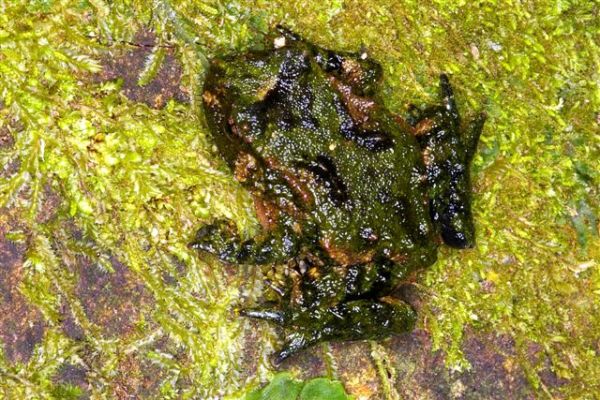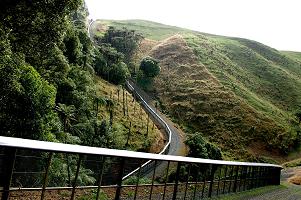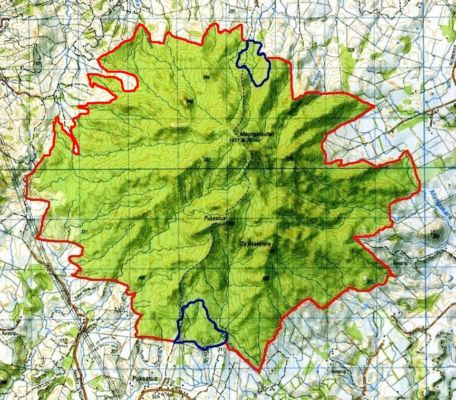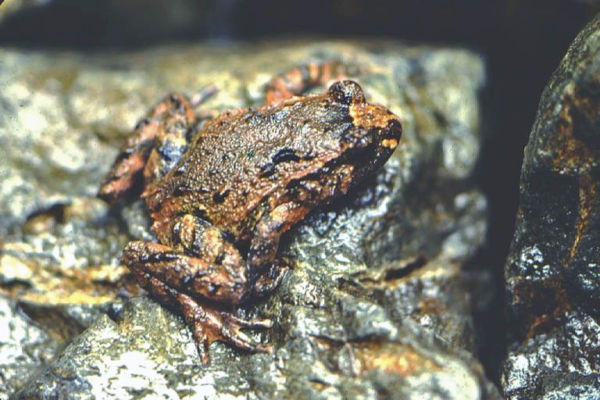When planning began for Maungatautari Ecological Island Sanctuary, no-one knew that a population of New Zealand’s endemic Hochstetter’s Frog lived within the sanctuary’s planned fenceline. For once, one of our threatened species was in the right placed at the right time and it’s discovery was an exciting surprise…

Hochstetter’s Frog is classified as ‘At risk – Declining’ under the New Zealand Threat Classification system and as with all of New Zealand’s endemic frog species, little is understood about the reasons for their decline. Habitat destruction and introduced predators are, however, high on the ‘suspect list’. The creation of Maungatautari Ecological Island removed the predator factor – and researchers watched to see how the frog population responded.
So what happened once the fence at Maungatautari was completed and introduced predators removed?

“We conducted surveys in November of 2009 and 2012. All surveys were carried out along 23 permanently marked 20m transects on seven streams, of which only 22 were surveyed in 2012. Searching for frogs consisted of an active search of the entire stream margin area, lifting all suitable cover objects and checking crevices beneath larger objects. Head lamps were used to improve the visibility of the cryptic frogs.”
With chytrid fungus threatening frog species around the world, biosecurity was an important aspect of the study.
“Strict biosecurity measures were taken to avoid the spread of chytrid fungus and other soil or water-borne pathogens. At the end of each field day, or if moving between catchments within the same day, wet and muddy equipment was cleaned and sprayed with TriGene™ broad-spectrum disinfectant.”
The results showed an impressive increase in the frog population.
“Survey data from this population shows a fourfold increase in numbers between 2009 and 2012 from a very low initial density… Given that the generation time of Hochstetter’s Frog is thought be approximately two years and their clutch size fairly small (10–22 eggs), a fourfold increase in just three years is even more impressive.”
It seems that as numbers grow, the frog population is spreading out too.

“We are not aware of any population of any Leiopelma species for which such an increase has been recorded over such a short period of time, for any reason. The increase not only in the rate of discovery, but in the spatial extent of discovery, suggests a population that is both increasing in numbers and spreading from an initially limited distribution.”
So introduced predators are clearly a factor in the decline of at least one of our endemic frog species. Should we, then, be looking at transferring our frogs to predator-free sanctuaries, as well as our more vulnerable bird and reptile species?
Finding suitable habitat may be one limiting factor. The preferred habitat of Hochstetter’s Frog is on the margins of stony-bottomed low-order streams and seepages with little sediment load, typically in mature native forest.
“Maungatautari is the only pest-free site at which Hochstetter’s Frog is currently found, and possibly the only pest-free mainland site with suitable habitat for this species. Pest-free offshore islands continue to be a mainstay of endangered species management in New Zealand, but most offshore islands are small, and not mountainous enough to have permanent rocky streams. An exception is Hauturu (Little Barrier Island).”

Predator proof sanctuaries are proving havens for translocated bird species, but it’s not just birds that potentially benefit. Frogs, reptiles and invertebrates are also likely to benefit, whether their presence is known or not. The accidental inclusion of Hochstetter’s Frog within Maungatautari and the rapid benefit to frog numbers that resulted, shows just how important such sanctuaries can be.
“Like marine reserves and other spatially defined areas of absolute protection, pest-free environments provide benefits to all species, even those that are not known to be present when the protection is initially put in place… Our results suggest that for Hochstetter’s Frog at least, and possibly the other mainland species of Leiopelma, introduced mammals are a major driving factor in population declines. Given that the frog population at Maungatautari was discovered by serendipity when planning for the pest-free sanctuary was already well underway, this also highlights the conservation value of large pest-free areas and ecosystem-level management.”
The full research article is published in the Ecological Management and Restoration and is freely available online.

